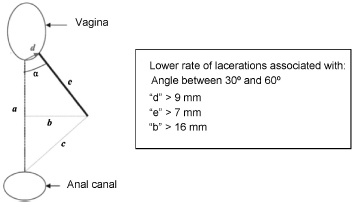Summary
Revista Brasileira de Ginecologia e Obstetrícia. 2016;38(6):301-307
06-01-2016
Episiotomy is a controversial procedure, especially because the discussion that surrounds it has gone beyond the field of scientific debate, being adopted as an indicator of the "humanization of childbirth". The scientific literature indicates that episiotomy should not be performed routinely, but selectively.
To review the literature in order to assess whether the implementation of selective episiotomy protects against severe perineal lacerations, the indications for the procedure, and the best technique to perform it.
A literature search was performed in PubMed using the terms episiotomy or perineal lacerations, and the filter clinical trial. The articles concerning the risk of severe perineal lacerations with or without episiotomy, perineal protection, or episiotomy techniques were selected.
A total of 141 articles were identified, and 24 of them were included in the review. Out of the 13 studies that evaluated the risk of severe lacerations with and without episiotomy, 5 demonstrated a protective role of selective episiotomy, and 4 showed no significant differences between the groups. Three small studies confirmed the finding that episiotomy should be performed selectively and not routinely, and one study showed that midline episiotomy increased the risk of severe lacerations. The most cited indications were primiparity, fetal weight greater than 4 kg, prolonged second stage, operative delivery, and shoulder dystocia. As for the surgical technique, episiotomies performed with wider angles (> 40°) and earlier in the second stage (before "crowning ") appeared to be more protective.
Selective episiotomy decreases the risk of severe lacerations when compared with the non-performance or the performance of routine episiotomy. The use of a proper surgical technique is fundamental to obtain better results, especially in relation to the angle of incision, the distance from the vaginal introitus, and the correct timing for performing the procedure. Not performing the episiotomy when indicated or not applying the correct technique may increase the risk of severe perineal lacerations.
